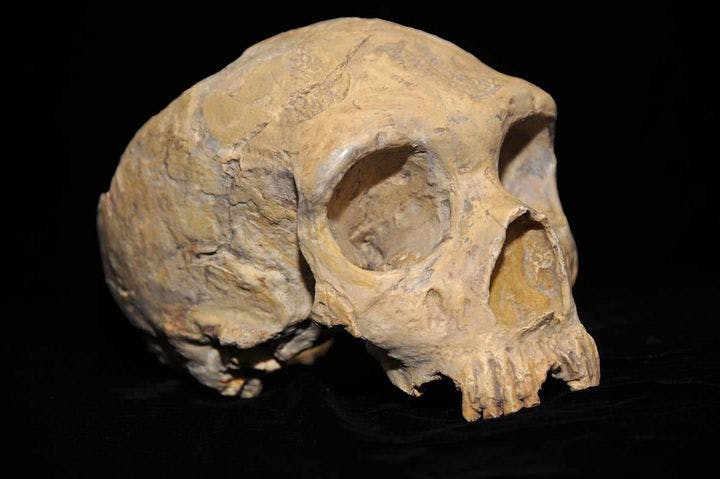Fall 2010
Cloning the Neanderthals
– The Wilson Quarterly
One scientist says that the clones would be no more than “neo-Neanderthals.”
Nearly 50,000 years agoin northern Spain, 11 Neanderthals were murdered. The circumstances remain mysterious, but the evidence—1,700 broken bones—is today providing scientists with many clues about what color hair Neanderthals had (red), what their skin looked like (pale), and whether they spoke (probably). It’s possible that in due time, DNA extracted from those bones or those of another Neanderthal will be implanted in a cell, that cell will be coaxed into multiplying, and, with the right techniques and no shortage of luck, the result will be a living, breathing Neanderthal. Such an achievement will “force the field of paleoanthropology into some unfamiliar ethical territory,” writes Zach Zorich, a senior editor at Archaeology.
Neanderthals are modern humans’ closest extinct relative, having branched off from our line of the family tree some 450,000 years ago. Locked in their DNA could be priceless information for scientists studying diseases that are “largely human-specific, such as HIV, polio, and smallpox.” If Neanderthals turn out to be genetically immune to such ailments, it’s possible that studying their DNA could lead to gene therapy treatments. But for scientists interested in cloning a Neanderthal, technical hurdles stand in the way. A stitched-together genome (since no intact ones exist) would likely be full of errors, and to make it, scientists would have to take several samples, destroying rare bones in the process. One method of cloning—nuclear transfer—tends to produce many sickly organisms that often die. Perfecting the process would “require a horrifying period of trial and error,” Zorich explains. Another method—using stem cells—has so far only been tested in mice.
Even if scientists are one day able to clone a Neanderthal, the resulting being would lack “the environmental and cultural factors that would have influenced how the original Neanderthals grew up.” One scientist says that the clones would be no more than “neo-Neanderthals.”
Bernard Rollin, a bioethicist and professor of philosophy at Colorado State University, doesn’t believe that cloning a Neanderthal would be a problem—the issue, he says, is how that clone would be treated once he or she was brought into the world. Would a clone have human rights under the Constitution and international law? How much of a genome needs to be changed before someone is not considered human? Moreover, no one would be creating these clones just on a lark. They’d be created for research—to be studied and experimented on. Wouldn’t they need to give their consent?
“The ultimate goal of studying human evolution is to better understand the human race,” Zorich writes. “But what if the thing we learned from cloning a Neanderthal is that our curiosity is greater than our compassion?”
THE SOURCE: “Should We Clone Neanderthals?” by Zach Zorich, in Archaeology, March–April 2010.
Photo courtesy of Wikimedia Commons
Up next in this issue
